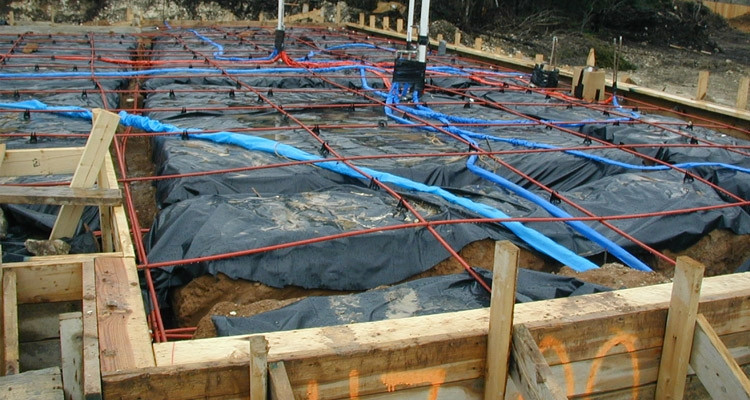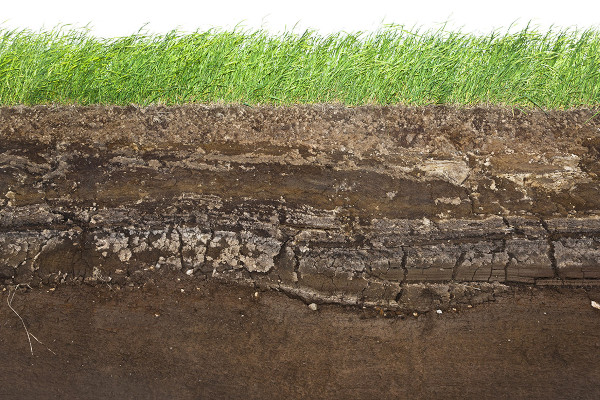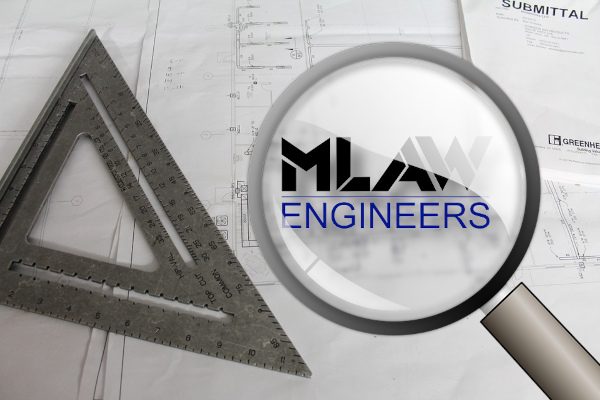Featured Article

One of the more disagreeable features of construction concrete is its ability to generate cracks. Cracks are of several varieties. Some are very fine, almost invisible to the naked eye, some are large and ominous looking. There are two basic types of cracks; the first type is shrinkage related while the second type is external stress related.
Of the two types, shrinkage is probably the most common and causes the most public relation problems with owners, contractors and even some engineers. The primary difficulty with shrinkage cracks is appearance. It looks like the concrete is breaking up when in fact most shrinkage cracks are non-events from a structural point of view.
The fact is that all concrete will shrink. Even good concrete will shrink approximately 1/8” per 20 feet. This shrinkage is due to the evaporation of water while the concrete cures. The loss of water causes a slight reduction in volume and when the tensile forces generated by the shrinking concrete exceed the tensile strength, a crack appears. Of course, really bad concrete will have more shrinkage cracks than really good concrete, everything else being equal. The major cause of excessive shrinkage cracks is excessive water in the concrete and improper curing, in conjunction with low humidity, heat and wind during the hardening and curing time.
Steel reinforcement will tend to hold the concrete together when it attempts to separate due to shrinkage, and in this regard mild steel reinforcing is more effective than post-tensioning cables. This is because the cables provide no reinforcement until the stressing load is applied, which is typically at least a week after the concrete has been placed. By this time any shrinkage cracks that will appear have appeared, and generally are only partially closed up by the application of the pre-stress force.
In hot dry weather, several solutions can be attempted to reduce the number and severity of shrinkage cracks. These include the following:
- Placing concrete without excessive water being added.
- Putting in water reducing agent so that workability is maintained but water content is kept quite low.
- Proper curing and shielding of the concrete while it is green. Curing can be done by a fog spray, wet burlap and canvas, polyethylene sheeting, ponding water on the slab or using chemical type curing compounds sprayed on the fresh concrete immediately after finishing. It may also help to place concrete very early in the morning when it is cool. As soon as the initial set occurs and finishers are off, utilize one of the curing procedures mentioned above.
- Partial stressing of the cables 24 to 48 hours following concrete placement.
The cracks related to externally applied stress are a more serious matter from a structural point of view and indicate the foundation has been over-stressed due to structure loads or moving support soil.
The foundation engineer must be consulted concerning these types of cracks. In many cases it is difficult to determine the difference between a shrinkage related crack and a load related crack, and sometimes a crack is caused or exaggerated by both forces.
Even in the case of a load related crack, all may not be lost. The function of a foundation is, after all, to remain flat or plane enough to avoid distortion of the superstructure. As long as this criterion is met, the superstructure doesn’t care how many cracks are in the concrete foundation below it.
Good concrete and good public relations are best served by using a good quality mix, not adding excessive water while placing, using a water reducing admixture in hot weather, and religiously applying a curing technique as soon as possible. For post-tensioned slab foundations, it is important to apply the full stressing load as soon as possible within four to seven days after placement, or partial stressing even earlier.
The only solution for load related cracking is to have a competent Geotechnical Engineer and Foundation Engineer involved to produce a correct design for the site and structure. Of course, it also helps if the contractor properly executes the design in the field. Without proper attention to the above techniques, cracking in concrete can produce unpleasant results for the builder, ranging from bad public relations to expensive lawsuits.
Newsletter amended from original published in August 2001 by Mr. Kirby T. Meyer, P.E.
MLAW Engineers

Explore
The Geology of Central Texas, or Why Foundations Do Funny Things
Introduction Central Texas has one of the most geologically diverse small regions to be found anywhere in the world. The many geologic layers, folds and faults cause different types of soil to outcrop in great profusion in this region. Many people have heard of the Balcones Fault. This is a system of many faults that…
Read MoreFraming Problems
Most single and multi-family residences and significant number of small to mid size commercial structures utilize wood framing for structural support. Terms: Timber Framing – refers to heavy timber 8″ x 8” or larger. Lumber – surface finished (S4S) wood members equal to or smaller than 6″ x 6″ or 2″ x 14″. GLU-LAM –…
Read More

